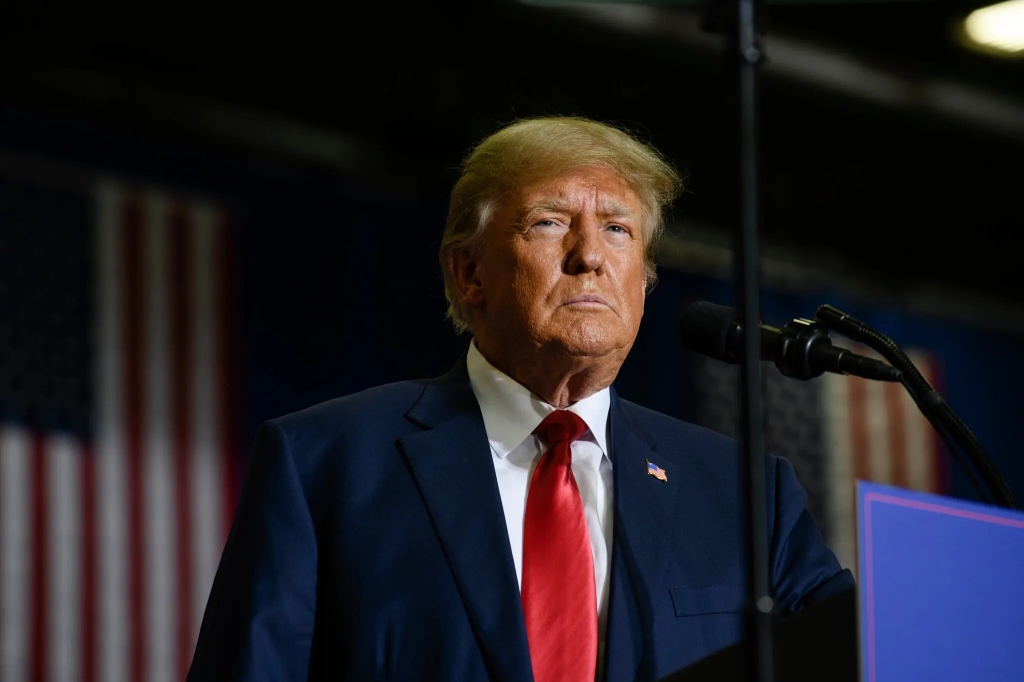
“The Truth is Out: House Democrats Release Six Years of Trump’s Tax Records”
It’s been a long time coming, but the wait is over: House Democrats have finally released six years of former President Donald Trump’s tax records. The closely guarded documents were made public after years of legal battles and speculation about the former president’s wealth and financial entanglements.
The release came just 10 days after Democrats on the House Ways and Means Committee published two reports about Trump’s taxes as part of an inquiry into the Internal Revenue Service’s practice of conducting mandatory audits on presidents while they are in office. The reports found that the I.R.S. failed to audit Trump during the first two years of his presidency and did not begin the examination process until 2019, after House Democrats initiated oversight proceedings in an attempt to gain access to his tax records.
“Our findings turned out to be simple – I.R.S. did not begin their mandatory audit of the former president until I made my initial request,” said Representative Richard E. Neal of Massachusetts, the chairman of the Ways and Means Committee, in a statement.
While much of the information in the tax returns has already come to light, including through the two reports released last week, the full records from 2015 through 2020 are expected to provide a rare window into the complexity of Trump’s finances and whether he may have profited from tax policies he signed into law as president. Those include the 2017 Tax Cut and Jobs Act, which provided a series of tax breaks and cuts for businesses and wealthy individuals.
The data released last week showed that during the first three years of his presidency, Trump paid $1.1 million in federal income taxes but paid no tax in 2020 as his income dwindled and losses mounted. During his first year as president, Trump paid $750 in federal income tax and reported $12.9 million in losses.
The nonpartisan Joint Committee on Taxation, which reviewed Trump’s tax returns for the House Ways and Means Committee, found several red flags in the former president’s filings that it said warranted further investigation. Those included transactions with his children and a deduction he took related to the settlement of fraud claims against the now-defunct Trump University.
Tax returns are among the most privately held documents in the United States. Although Congress has the power to obtain and release them, it rarely takes such action. After Trump broke with tradition and declined to release his returns as a presidential candidate or while he was in office, Democratic lawmakers sought them out of concern about potential conflicts of interest. Ultimately, they were able to unlock them using their oversight powers through the inquiry into the I.R.S. policy of auditing presidents and vice presidents.
In 2020, after obtaining data from more than two decades of Trump’s tax returns, The New York Times traced the boom-and-bust arcs of his financial history: dubious tax avoidance, huge losses, and a life buttressed by an inherited fortune. The newly released tax returns show how that pattern extended through his years in Washington.
The reports issued by the Ways and Means Committee also highlighted how outgunned the I.R.S. was in dealing with the army of lawyers, accountants, and tax professionals hired by Trump to defend him in the audits of his returns before, during, and after his presidency.
“With over 400 flow-thru returns reported on the Form 1040, it is not possible to obtain the resources available to examine all potential issues,” I.R.S. agents said of Trump’s tax returns in an internal memo that the committee released last week.
Republicans warned that the release of a private individual’s tax returns would set a dangerous precedent, but Democrats argued that the
Leave a comment